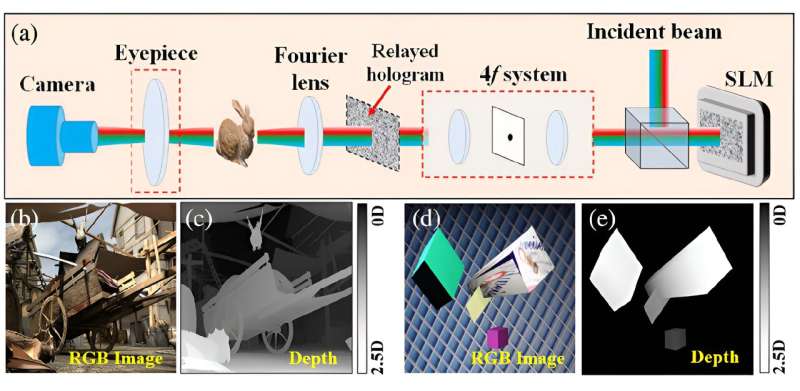This article has been reviewed according to Science X's editorial process and policies. Editors have highlighted the following attributes while ensuring the content's credibility:
fact-checked
peer-reviewed publication
trusted source
proofread
Advancing real-time 3D holographic display: A new method for computer-generated holography

Holographic displays offer a promising avenue for achieving lifelike 3D reproductions with continuous depth sensation, holding potential applications in fields such as entertainment, medical imaging, and virtual reality. However, the conventional methods for generating computer-generated holograms (CGHs) rely on repetitive computations, leading to increased computational complexity and impracticality for real-time applications.
To tackle this issue, researchers from the University of Shanghai for Science and Technology (China) have introduced a novel method for CGH generation that significantly reduces computational overhead while maintaining high-quality 3D visualization.
As reported in Advanced Photonics Nexus, their approach leverages a split Lohmann lens-based diffraction model, enabling rapid synthesis of 3D holograms through a single-step backward propagation calculation. By incorporating a specially designed virtual digital phase modulation into the split Lohmann lens, their method achieves highly accurate reconstruction of 3D scenes with precise depth perception.
The significance of this research lies in its potential to revolutionize the creation of holographic displays by offering a practical solution for real-time CGH generation. Unlike traditional methods that suffer from computational bottlenecks, the proposed approach ensures consistent computation speed regardless of the depth sampling density, thereby enabling seamless integration into various applications requiring immersive 3D visualization.
To validate the effectiveness of their method, the researchers conducted both simulations and experiments, demonstrating its ability to generate realistic 3D holographic displays with accurate depth perception.
Overall, the study presents a promising advancement in the field of computer-generated holography, offering a practical solution for creating immersive 3D visualizations without the computational limitations of traditional methods. It helps pave the way for the widespread adoption of holographic displays in diverse industries and applications.
More information: Chenliang Chang et al, Split Lohmann computer holography: fast generation of 3D hologram in single-step diffraction calculation, Advanced Photonics Nexus (2024). DOI: 10.1117/1.APN.3.3.036001
Journal information: Advanced Photonics
Provided by SPIE





















